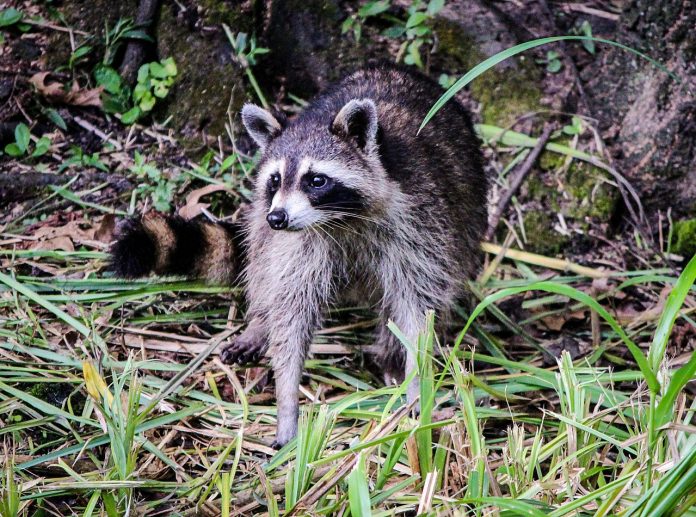Last week a reader wrote, “Scott, I recently read a report that said the federal government killed 624,845 red-winged blackbirds, 357 gray wolves, and 69,041 adult coyotes last year. That can’t be true, can it?”
Sadly, it is.
USDA
According to its website, the USDA’s APHIS Wildlife Services (WS) mission is, “to provide Federal leadership and expertise to resolve wildlife conflicts to allow people and wildlife to coexist…
Program biologists apply the integrated wildlife damage management approach to provide technical assistance and direct management operations in response to requests for assistance.
WS research scientists are dedicated to the development of wildlife damage management methods…The Program’s efforts help people resolve wildlife damage to a wide variety of resources and to reduce threats to human health and safety.
APHIS
APHIS is a multi-faceted agency with a broad mission area that includes protecting and promoting U.S. agricultural health, regulating genetically engineered organisms, administering the Animal Welfare Act and carrying out wildlife damage management activities.
Its mission is, “To protect the health and value of American agriculture and natural resources. These efforts support the overall mission of USDA, which is to protect and promote food, agriculture, natural resources and related issues.
Most state and federal wildlife agencies exist to help wildlife populations prosper, but who deals with problem wildlife?
For example, if beaver dams flood a low lying road, if Canada geese feces make a high school ball field unplayable, or if mountain lions kill ranchers’ lambs and calves, who you gonna call?
When such problems persist and seriously impact human activities, eventually the public finds its way to Wildlife Services. It’s a little-known office within the U.S. Department of Agriculture that deals with such problems.
Tough job
Sometimes its employees simply remove (kill) the offending animals. This can be done with guns, traps, or poisons.
Other times large groups of offending animals can be dispersed from favorite resting or roosting areas.
I can’t begin to list the complete findings for 2017. Killing wildlife as a job cannot be enjoyable, and I suspect it can take a psychological toll.
It’s nasty work, but someone’s got to do it.
By the numbers
Last year Wildlife Services killed 2,307,122 problem animals. It dispersed another 34,465,659. By species, here’s a partial list of animals killed for 2017.
- Opossums, 2,832
- Black-tailed prairie dog, 15,233
- Raccoons, 10,313
- Badgers, 353
- River otters, 587
- Black bear, 537
- Beavers, 23,644
- Bobcats, 983
- Feral cats, 472
- Feral swine, 65,264
- Coyotes, 69,041
- Timber wolves, 357
- Mountain lions, 316
- White-tailed deer, 7,524
- Canada geese, 21,488
- Black vultures, 7,503
- Turkey vultures, 1,474
- Great blue herons, 564
- Killdeer, 3,357
- Red-tailed hawks, 1,701
- Feral chickens, 2,712
- Rock pigeons, 74,990 (160,489 dispersed)
- Mourning Doves, 22,924
- American Robins, 451 (18,149 dispersed)
- European Starlings, 733,773 (22,151,292 dispersed)
- Brown-headed Cowbirds, 285,657
- Common grackles, 51,869
- Red-winged blackbirds, 624,845 (1,364,685 dispersed)
- American crows, 7,346
- Common Ravens, 7,950
For complete results of Wildlife Services activities dating back to 1996, visit aphis.usda.gov, click on “Wildlife Damage,” then click “Reports and WS Pubs,” then click “Program Data Reports.”














IMO there needs to be more removal of feral cats which are devastating small wildlife, birds, herps, rabbits, etc. and these feral cats also carry toxoplasmosis…which is affecting marine animals off the West Coast, as well as posing an ongoing threat to humans. Feral and free roaming cats NEED TO BE REMOVED. Now, as for farmers, I grew up on a farm, a very productive farm and we did not use PESTICIDES…because they did not exit then. We also had a large garden and a large potato patch that provided annual food for a family of six. Here is my problem…right now we have TOO MANY FARMERS USING PESTICIDES AND CHEMICALS WHICH ARE HARMING WILDLIFE AND PEOPLE. I read a study which stated using pesticides increases yield ONLY 5% if at all. SO WHY are pesticides being used so widely? (I suppose it is to provide profits for companies making pesticides!) I purchased a commercial product containing seeds which were supposed to be safe for exotic birds. I lost about a dozen birds in one day from that pesticide containing seeds. Instant kidney failure. Rare breeding stock. Not to mention the $30,000 in value. We need a damn sight more regulation on the use of pesticides. Pesticide use is sickening humans, affecting developing fetuses in humans, etc. So, maybe a little focus on the serious problem of pesticides and chemicals in use by farmers would be helpful to humans and the environment. I have heard from college students that even in college courses that pesticides are not considered to be a problem or to cause health issues!